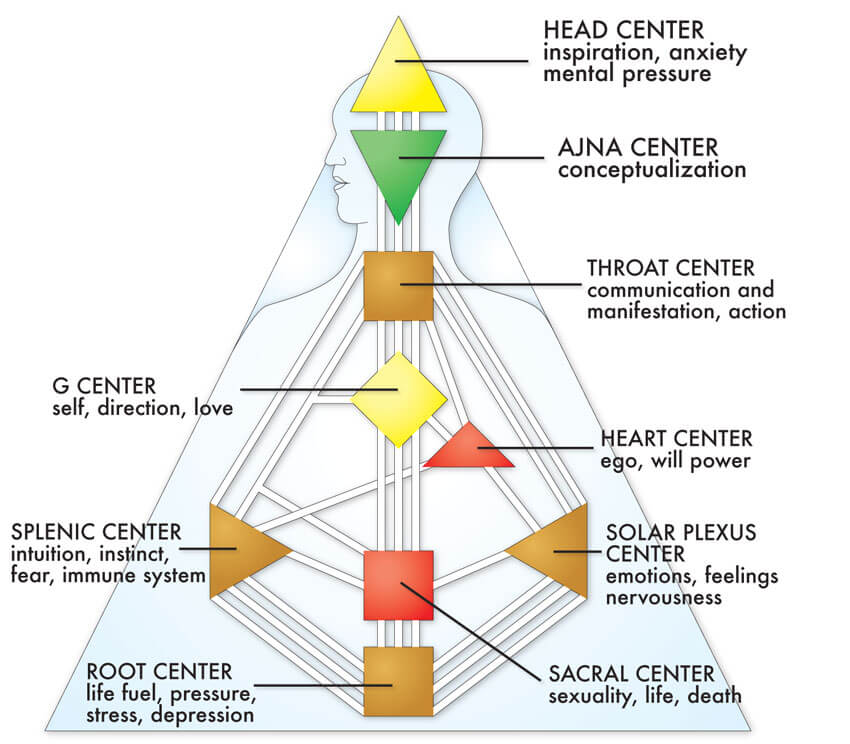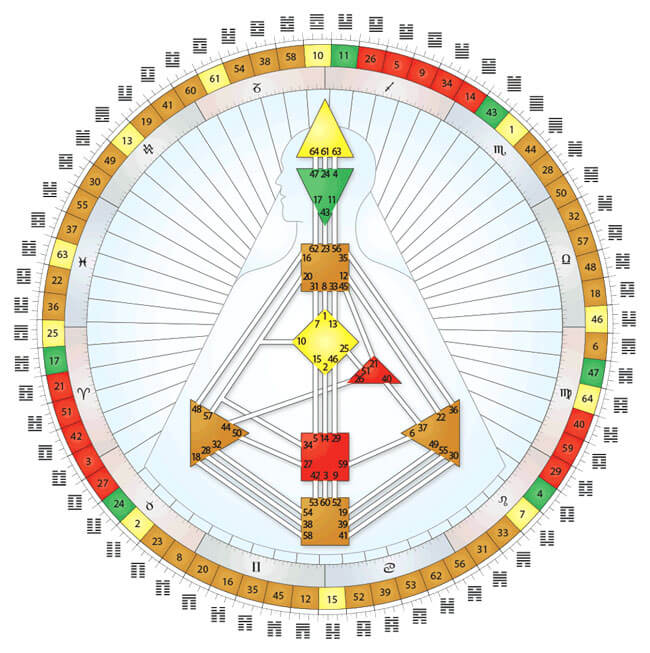Each of us is unique. We are meant to specialize and play specific roles. Our capability for genuine action and self expression comes from an inner truth and strength within each of us. There is potential for great power and magnificence in all of us.
Human Design is a language and system of classifications, visually representing human experience. Its many components represent different aspects of how we function. It names our feelings and offers insights into how different parts of us work.
Individual Designs depict people's unique configurations. We are happy and successful when our interactions and commitments are in alignment with our inherent nature and capabilities. The information in a chart can help us prioritize which internal voices and feelings to listen to.
Each configuration, or Design, has its own Strategy and Authority. Strategy and Authority describe the parts of us that help guide our decision making. The goal of the system is to help people understand themselves, find inner strength and clarity, and to live genuine lives.
Human Design differentiates people using the concepts of Definition and Openness. Definition represents an internal activation in the individual. It brings the potential for consistent development and expression of its qualities. Undefined aspects are receptive. They have the potential to be open and experience the Defined energy of others. When people interact, an exchange takes place. People take in and feel Defined aspects through their open ones.
Human Design is a language and system of classifications, visually representing human experience. Its many components represent different aspects of how we function. It names our feelings and offers insights into how different parts of us work.
Individual Designs depict people's unique configurations. We are happy and successful when our interactions and commitments are in alignment with our inherent nature and capabilities. The information in a chart can help us prioritize which internal voices and feelings to listen to.
Each configuration, or Design, has its own Strategy and Authority. Strategy and Authority describe the parts of us that help guide our decision making. The goal of the system is to help people understand themselves, find inner strength and clarity, and to live genuine lives.
Human Design differentiates people using the concepts of Definition and Openness. Definition represents an internal activation in the individual. It brings the potential for consistent development and expression of its qualities. Undefined aspects are receptive. They have the potential to be open and experience the Defined energy of others. When people interact, an exchange takes place. People take in and feel Defined aspects through their open ones.
The Nine Centers

The Nine Centers are represented by nine geometric shapes, and are the primary building blocks of a chart. Centers can be Defined (colored in) or Undefined (left open). Defined and Undefined Centers have different roles. The themes of the centers affect one another, and inform the way they function. The way Centers are Defined and connected to each other determines the Type and Authority of the Design.
There are several categories of Centers. First, there are Pressure Centers which represent the pressure that drives us both physically and mentally. The 2 Pressure Centers are the Head and the Root. Several Centers are classified as Motors; they embody our physical energy to work and be active. The 4 Motors are the Root, Sacral, Heart, and Solar Plexus. Next are Awareness Centers, which represent awareness of ourselves and others and our ability to take in and process information. The three Awareness Centers are the Spleen, Ajna and Solar Plexus.
There are several categories of Centers. First, there are Pressure Centers which represent the pressure that drives us both physically and mentally. The 2 Pressure Centers are the Head and the Root. Several Centers are classified as Motors; they embody our physical energy to work and be active. The 4 Motors are the Root, Sacral, Heart, and Solar Plexus. Next are Awareness Centers, which represent awareness of ourselves and others and our ability to take in and process information. The three Awareness Centers are the Spleen, Ajna and Solar Plexus.
Mandala
The colored wheel surrounding the Bodygraph is called the Mandala. It is subdivided into 64 partitions that represent Gates. The 64 Gates correspond to the 64 Hexgrams of the I'Ching. Each Gate number has a fixed location in the Bodygraph and the Mandala. The Gates are color coded to match the color of the Center that they are connected to. Each Gate is divided into six sub-sections called Lines. (These are the short notches within the arc of each Gate around the wheel). The inner wheel of the Mandala is sub-divided into the 12 astrological signs.

The Four Types
The Human Design System groups people into one of four categories called Types: Manifestors, Generators, Projectors and Reflectors. There is also a sub-group of Generators called Manifesting Generators. Each Type has a different Strategy to help individuals develop healthy decision making skills and cultivate practices that affirm their unique gifts. Human Design focuses on how the Types interact with one another and explores how understanding their specific roles can help them live happier healthier lives. To determine your Type, please get free chart.